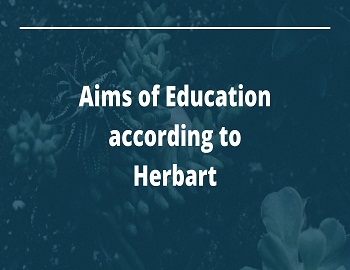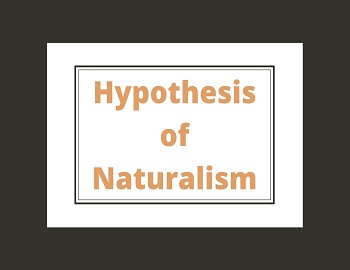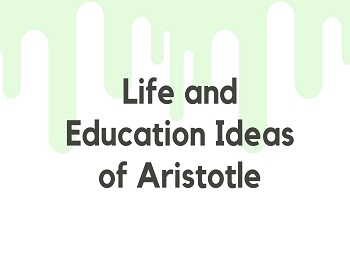Aims of Education according to Herbart:
According to Herbart, “Education consists in the conquest of the lower impulses by the higher altogether. Education may be summed up in one concept of morality”.
Herbart was in disagreement with Pestalozzi in regard to the inner tendencies and powers of the child. He had before him only one aim of education and that was to develop morality and build up the character of the child. He has said that education should be a means for the development of moral virtues in the educands.
The morality of Herbart is nothing but sum total of the five ideas enunciated by him. They are-
- Internal Freedom.
- Perfection.
- Good will.
- Equity or equality.
- Justice.
Herbart feels that teachers should try to present this material world before the child in a moral way. He should also try to connect his presentation with the existing ideas of the child. This will help him to build up his character and also help him to distinguish between good and bad.
To Develop Versatile Interest- Once the aim has been set and that is to build the character and bring about morality in the child, the question arises as to how to achieve it. It has already been stated that Herbart was of the view that the teaching of the child should be connected with the previous experiences of the educand. On the other hand, it should also be attempted to co-relate the present education with the past experiences of the child. When this is done, certain interests will sprout forth within the child. This will be the development of the versatile interest in the child. It is these interests that will inspire the child to take up certain activities and ultimately lead to his character building. There are two sources of these interests as enunciated below.
- Experience that gives knowledge.
- Social contacts which bring about new ideas and inspire new activities.
On the basis of these sources of interests, they have also been divided into categories-
- Interests that are connected with knowledge.
- Social interests.
These interests have a relation with social sympathy or social qualities.
Interests pertaining to knowledge have again been divided into three categories:
- Experimentative Interests- Interests that have relationship with the experiecnes come under this category.
- Imaginative Interests- They have relations with the imagination.
- Aesthetic Interests- These interests have bearings on the aesthetic qualities of the child or bring about the development of these aesthetic qualities.
Social interests, on the other hand, have again been divided into three categories-
- Interests relating to the feeling sympathy- These interests are connected with the individual’s relations with other individuals or membres of the society.
- Social interests are connected with the society.
- Religious interests- They have their connection with the spirit of the soul. They may be called character-building interests.
The chart showing various interests may be drawn as below-

Herbart himself laid great emphasis on ‘interests’. He was of the view that these interests should be used as an agency to develop the feeling of consciousness in the children. All this was aimed at character-building. That is why Herbart said, “Do not forget interest among interesting things”.
According to Herbart, the aim of education was the man himself. He said that ‘education should aim at making the child a real man. In other words, it can be said that education should aim at developing human qualities in a man. Other than this, education has no aims. A real man is that who is well-equipped, educated and has character. He has self-confidence and is able to face all the circumstances boldly and ably. Such people are capable of building society in accordance with its requirements. Those traditions and superstitions that are harmful to society are done away with only by such individuals. These men of character have the thinking power in them and are able to take the distinction of crucial issues. Ultimately, such men bring about the proper development of the nation. Education should aim at building up such individuals.









Comments (No)